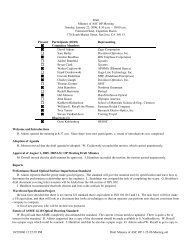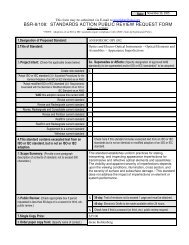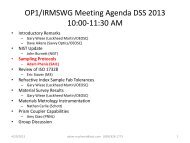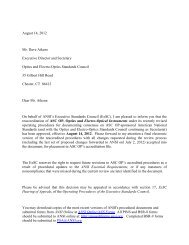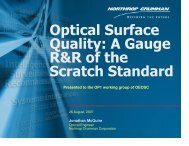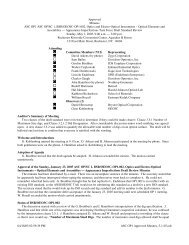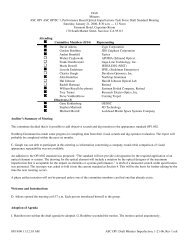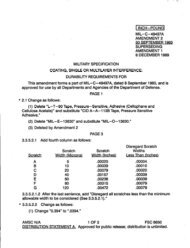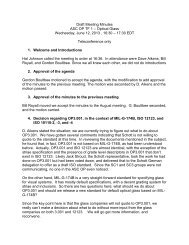INCH-POUND MIL-PRF-13830B 9 January 1997 SUPERSEDING ...
INCH-POUND MIL-PRF-13830B 9 January 1997 SUPERSEDING ...
INCH-POUND MIL-PRF-13830B 9 January 1997 SUPERSEDING ...
You also want an ePaper? Increase the reach of your titles
YUMPU automatically turns print PDFs into web optimized ePapers that Google loves.
<strong>MIL</strong>-<strong>PRF</strong>-<strong>13830B</strong><br />
3.5.3.2 Maximum size digs. The permissible number of maximum size digs<br />
shall be one per each 20mm of diameter or fraction thereof on any single optical<br />
surface. The sum of the diameters of all digs as estimated by the inspector<br />
shall not exceed twice the diameter of the maximum size specified per 20mm<br />
diameter. Digs less than 2.5 microns shall be ignored.<br />
3.5.3.3 Surface quality. All digs on each surface whose dig quality is<br />
number 10 or smaller shall be separated edge to edge by at least 1mm. The<br />
measurement of scattering shall not be required for surfaces where digs larger<br />
than number 10 are allowed.<br />
3.5.4 Bubbles and inclusions. Bubbles shall be classed as surface digs.<br />
Any inclusion in the glass shall be treated as a bubble. The size of irregular<br />
shaped inclusions shall be considered as one half the sum of the maximum<br />
length and the maximum width. Bubble size tolerances are identical in all<br />
respects to digs; but the bubble tolerance, is in addition to the dig tolerance.<br />
3.5.4.1 Maximum size bubbles. The permissible number of maximum size<br />
bubbles shall be one per 20mm of light path, or fraction thereof, of any single<br />
element. The sum of the diameters of all bubbles as estimated by the inspector<br />
shall not exceed twice the diameter of the maximum size specified per 20mm<br />
diameter for each 20mm of light path. When surface dig quality is 10 or<br />
smaller, bubbles shall follow requirements for digs as specified in 3.5.3.3.<br />
3.5.5 Limiting size of surface defects. If not specified on drawings, the<br />
limiting size of scratches or digs shall be determined from Table I and is based<br />
on the beam diameter of magnification.<br />
3.5.5.1 Beam diameter of magnification. The beam diameter shall be<br />
obtained from the optical data. It is the diameter at the surface of the optic in<br />
question, of a bundle of axial rays proceeding to the observer's eye. The<br />
diameter of the bundle at the eye shall be taken as 3.5mm, (0.1378 inch) if the<br />
exit pupil is over 3.5mm. If the exit pupil is smaller than 3.5mm, that diameter<br />
of the bundle at the eye shall be the same as the exit pupil.<br />
3.5.5.2 Beam size less than in table I. When the beam size is less than that<br />
specified for focal planes and near local planes of any surface, the size of defect<br />
is determined by the magnification of the eyepiece multiplied by magnification of<br />
the erecting system.<br />
3.5.5.3 Zone. The surface on which the beam diameter of an axial bundle is<br />
25 percent or less of the free aperture shall be divided into a central and outer<br />
zone. The central zone shall be half the free aperture in width. Zone size for<br />
reticles shall be as specified in 3.7.11.1.<br />
5<br />
Source: http://www.assistdocs.com -- Downloaded: 2006-05-24T15:32Z<br />
Check the source to verify that this is the current version before use.



